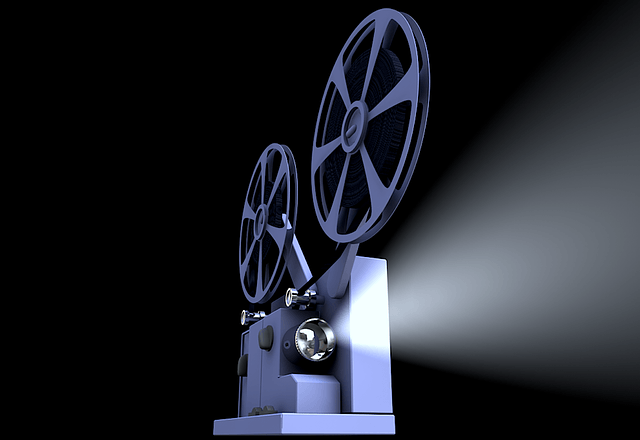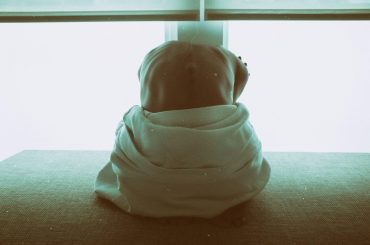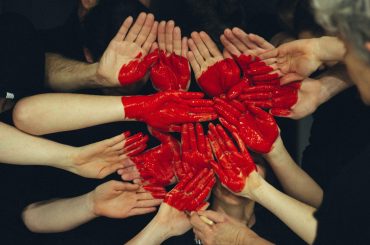 As a young lost child in a dysfunctional household I was not permitted access to the outside world. I used to think they were lovingly overprotective, but came to understand that they just couldn’t be bothered to engage with me or prepare me for eventual launch. I was guardedly brought to school, and then walked home by my mother, who carried a thermos of milk and a banana for the trip home. She clumsily tried to feed me while we walked and resented my disinterest in the whole affair. The thermos smelled sour and I never liked the texture of bananas. But that opinion was never expressed, much less clearly known, in my own mind. No other kid had a “walking-home-snack.” It was demeaning and infantilizing. I guess she thought I didn’t have the fortitude to complete the walk after so many hours out of her clutches. Need I describe the accompanying jeering and teasing by kids who didn’t like me much to begin with, and the obvious monkey comparisons? I was the fat, introverted, smart kid no one knew because we moved so often; always the stranger. As you might imagine, being fed like a chimp didn’t help me gain a shred of acceptance or street cred.
As a young lost child in a dysfunctional household I was not permitted access to the outside world. I used to think they were lovingly overprotective, but came to understand that they just couldn’t be bothered to engage with me or prepare me for eventual launch. I was guardedly brought to school, and then walked home by my mother, who carried a thermos of milk and a banana for the trip home. She clumsily tried to feed me while we walked and resented my disinterest in the whole affair. The thermos smelled sour and I never liked the texture of bananas. But that opinion was never expressed, much less clearly known, in my own mind. No other kid had a “walking-home-snack.” It was demeaning and infantilizing. I guess she thought I didn’t have the fortitude to complete the walk after so many hours out of her clutches. Need I describe the accompanying jeering and teasing by kids who didn’t like me much to begin with, and the obvious monkey comparisons? I was the fat, introverted, smart kid no one knew because we moved so often; always the stranger. As you might imagine, being fed like a chimp didn’t help me gain a shred of acceptance or street cred.
Fast forward a few decades and I started to explore the world, fearlessly on my own, with surprising zeal. Was there an adventuress hiding inside this captive prisoner? Was she boldly defying unspoken rules? I happened upon Disneyworld as an adult during a business trip day off and was blown away that children were exalted in such a fantastic place in so many ways. The laser focus on children’s joy was unthinkable. Although speechless, I reflexively flashed back on “Snow White” which aired at Radio City Music Hall in my youth. That was one glorious day spent with mom, favorite aunt and close cousin, sans drama. I was still a little girl. No one got smacked. No one got yelled at. No one threw up. It was the only day of its kind so it gleamed like an opening night marquee in my memory.
I suspect a love of films was ignited then by that one work of art, but the one love quickly blossomed into loving films of all genres and in any language as I gained in years, access to “New Yorker” issues and tokens for the NYC subways. It was like watching poetry move. I devoured the lighting, the tight shots, the dialogue, the scenery, the music, the sound, the typo design of the credits and every other nuance of this art form. It fed my soul, and unlike milk in a smelly thermos and warm bananas, I eagerly dined Finally, I found something I could do that didn’t highlight my lack of athletic or musical ability or personality – I could watch, carefully, and intuit the underlying theme.
One sunny day a long time later in California [2000] I took myself to see “Cast Away” with Tom Hanks, a story about one main character, Chuck Noland. How could 2 hours 23 minutes of film with barely any dialogue be entertaining? I had my doubts, but was also curious. The film, as it turned out, was a proxy for my recovery.
As a FedEx logistics employee Noland’s obsession with time and punctuality was necessary. He did whatever it took, including stealing a child’s bicycle, to meet critical deadlines. His fiancé gifted him with an heirloom watch because she knew how much keeping time mattered to him. I was no different as a mechanical human. Always anxious, always rushed and always looking four moves ahead for shortcuts. I could work through any process, step-by-step, striving, and achieving. Never enough and never good enough my life was mapped monthly for years into the future. That helped in academia and at work, but was a recipe for sleepwalking through life. It was all I knew, and I lived a very circumscribed, limited existence, and thought it was perfectly normal.
When Noland’s flight crashes in the Pacific he is stranded alone on a tropical island. He meticulously carves giant S.O.S letters into the sand, hoping that he’ll be rescued, only to see them erased by the tide. He thinks others are present until he realizes that falling coconuts are the noise culprits. Attempts to open them to get some potable liquid result in bloody hands until he crafts specialty tools from rock shards. Finding a dead body floating in alongside other wreckage enables him to know that at least he’s still alive and gather a few incongruous items to use in this new existence. He evolves from a frightened, flabby, lonely, hurting, vulnerable man who designs a suicide plan that ultimately fails into a lean, tan, survivalist who uses “what the tide brought in” to fashion friendship out of a volley ball, heal his dental (roots) issue, and create a raft out of port-a-potty walls and local flora. He cooks by creating fire so he can eat crab, a vile delicacy when raw. The oddest things like ice skates and cocktail dresses provide a way to survive and through time enable him to design a path off the island by using his wits, talents, and determination. This path becomes clear only when he finally accepts that he will not be rescued – that he is too far from the crash site. He carries with him one unopened package that had floated in the crash debris. When he is finally rescued at the end of the film, his welcome home celebration features a groaning board of cooked crab claws, bottled water and ice. He sleeps on the floor of his hotel room because he had not yet adjusted to life on land. His fiancé had married another, but he meets the recipient of that unopened package and the audience is left wondering whether they later become involved.
My recovery parallels to the film were plentiful, writ large. The unexpected crash of my family through mental illness and alcoholism. The hope for rescue that never comes; the serious consideration of suicide as a teenager. The desperate, dependent need for relationship of any kind, even with a volley ball. The inability to heal my roots, or find the right tools for living free from emotional intoxication. The unexpected appearance of an odd higher power that gave just enough “ice skates and tulle” to save me; what use were these in my pathetic condition? Recovery demanded that I examine all the areas of pain, loss, and incongruity eventually accepting and appreciating them for creating my soul, my strength, and my life. I’m not where I want to be yet, and suffer flashback moments where I “sleep on the floor.” But these are fewer with time and wisdom. I understand their context now and why they reappear. I too carry a type of unopened package of desire and hope into the future, always on the lookout for the joy and freedom that is promised. I have experienced both and anticipate even more…just in time.






